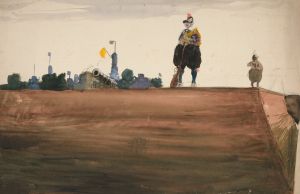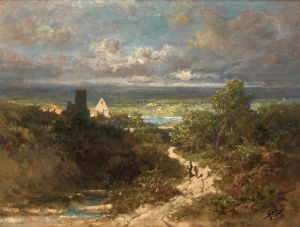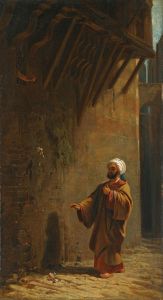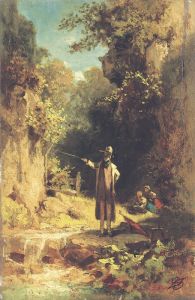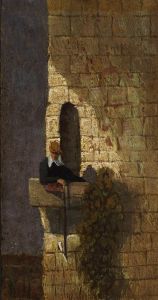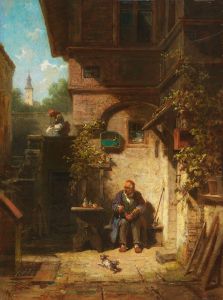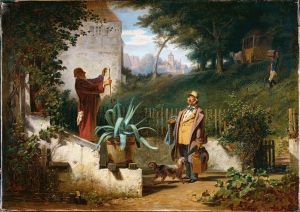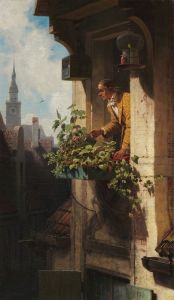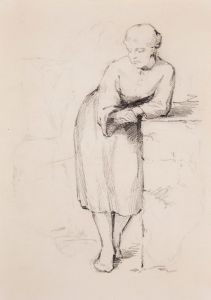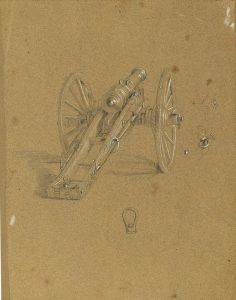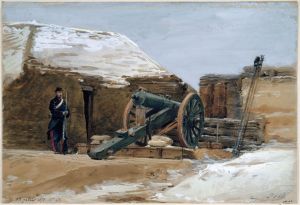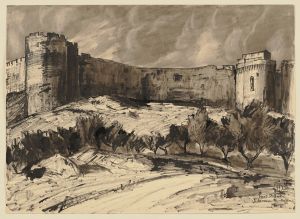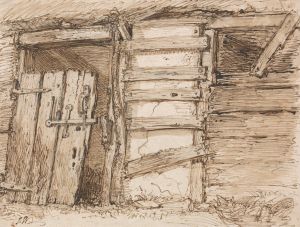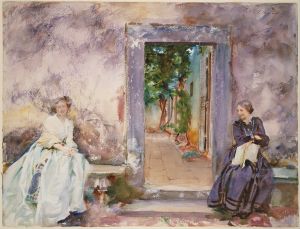
Festungsmauer
A hand-painted replica of Carl Spitzweg’s masterpiece Festungsmauer, meticulously crafted by professional artists to capture the true essence of the original. Each piece is created with museum-quality canvas and rare mineral pigments, carefully painted by experienced artists with delicate brushstrokes and rich, layered colors to perfectly recreate the texture of the original artwork. Unlike machine-printed reproductions, this hand-painted version brings the painting to life, infused with the artist’s emotions and skill in every stroke. Whether for personal collection or home decoration, it instantly elevates the artistic atmosphere of any space.
Carl Spitzweg was a renowned German painter of the 19th century, known for his detailed and often humorous depictions of everyday life. One of his works, "Festungsmauer," which translates to "Fortress Wall," is a testament to his ability to capture the essence of the period and the subtle nuances of human interaction within architectural settings.
Spitzweg was born in 1808 in Munich, and he initially pursued a career in pharmacy before turning to painting. His background in science and his self-taught artistic skills allowed him to develop a unique style that combined meticulous attention to detail with a whimsical approach to subject matter. His works often reflect the Biedermeier period's sensibilities, characterized by a focus on the domestic and the idyllic.
"Festungsmauer" is one of Spitzweg's many paintings that explore the relationship between people and their environments. Although specific details about the painting's creation and its current location are not widely documented, it fits within Spitzweg's broader oeuvre, which frequently features scenes set against the backdrop of urban and rural architecture. His paintings often include solitary figures or small groups engaged in everyday activities, set within detailed and atmospheric settings.
The painting likely depicts a scene involving a fortress wall, a common architectural feature in many European towns and cities during Spitzweg's time. Such walls were remnants of medieval fortifications, often repurposed or integrated into the urban landscape by the 19th century. Spitzweg's interest in these structures may reflect a broader cultural fascination with history and the picturesque qualities of old buildings.
Spitzweg's work is characterized by its warm color palette and the careful rendering of light and shadow, which imbue his scenes with a sense of tranquility and timelessness. His paintings often convey a narrative quality, inviting viewers to imagine the stories behind the depicted scenes. This narrative aspect, combined with his keen observation of human behavior, makes his work enduringly popular.
Throughout his career, Spitzweg remained largely independent, not aligning himself with any particular artistic movement. However, his work shares affinities with Romanticism and Realism, particularly in its focus on individual experience and the depiction of everyday life. His paintings are celebrated for their charm, wit, and the insight they provide into 19th-century German society.
Carl Spitzweg passed away in 1885, leaving behind a legacy of over 1,500 works, including paintings, drawings, and sketches. His art continues to be appreciated for its technical skill and its ability to capture the spirit of an era. "Festungsmauer," like many of his works, remains a testament to his talent for blending architectural and human elements into cohesive and engaging compositions.
While specific information about "Festungsmauer" may be limited, the painting is undoubtedly part of Spitzweg's broader exploration of the interplay between people and their environments, a theme that resonates throughout his body of work.





